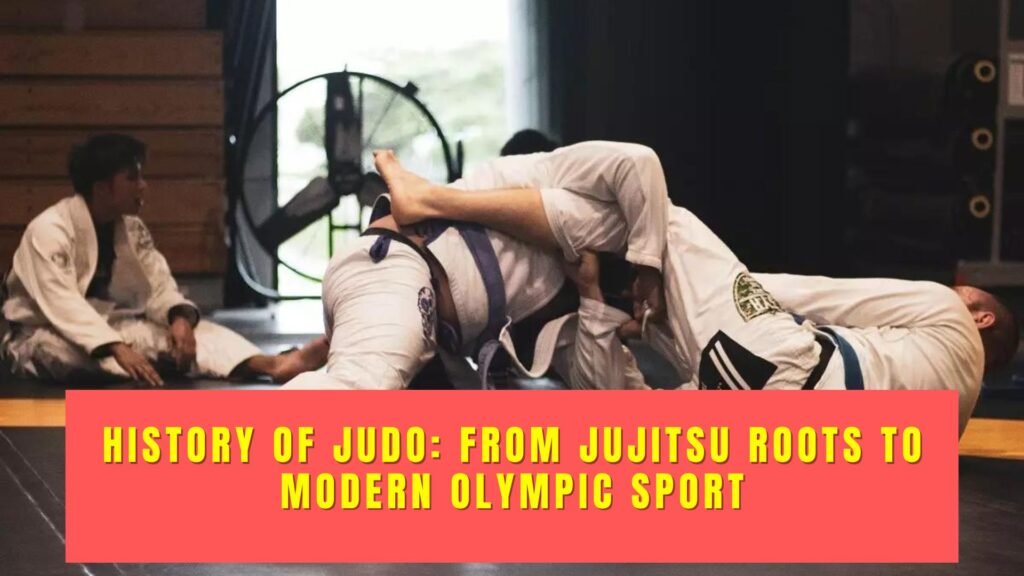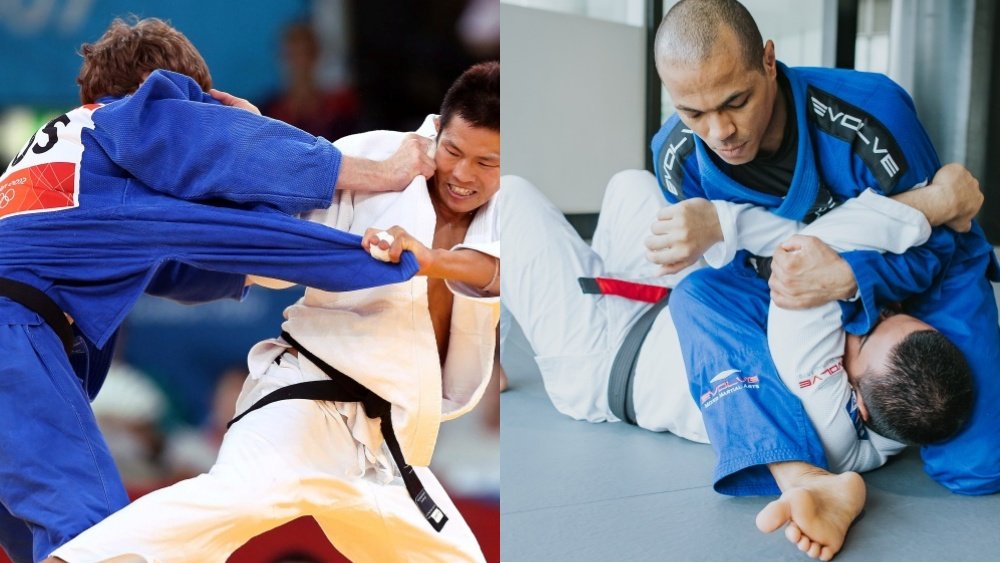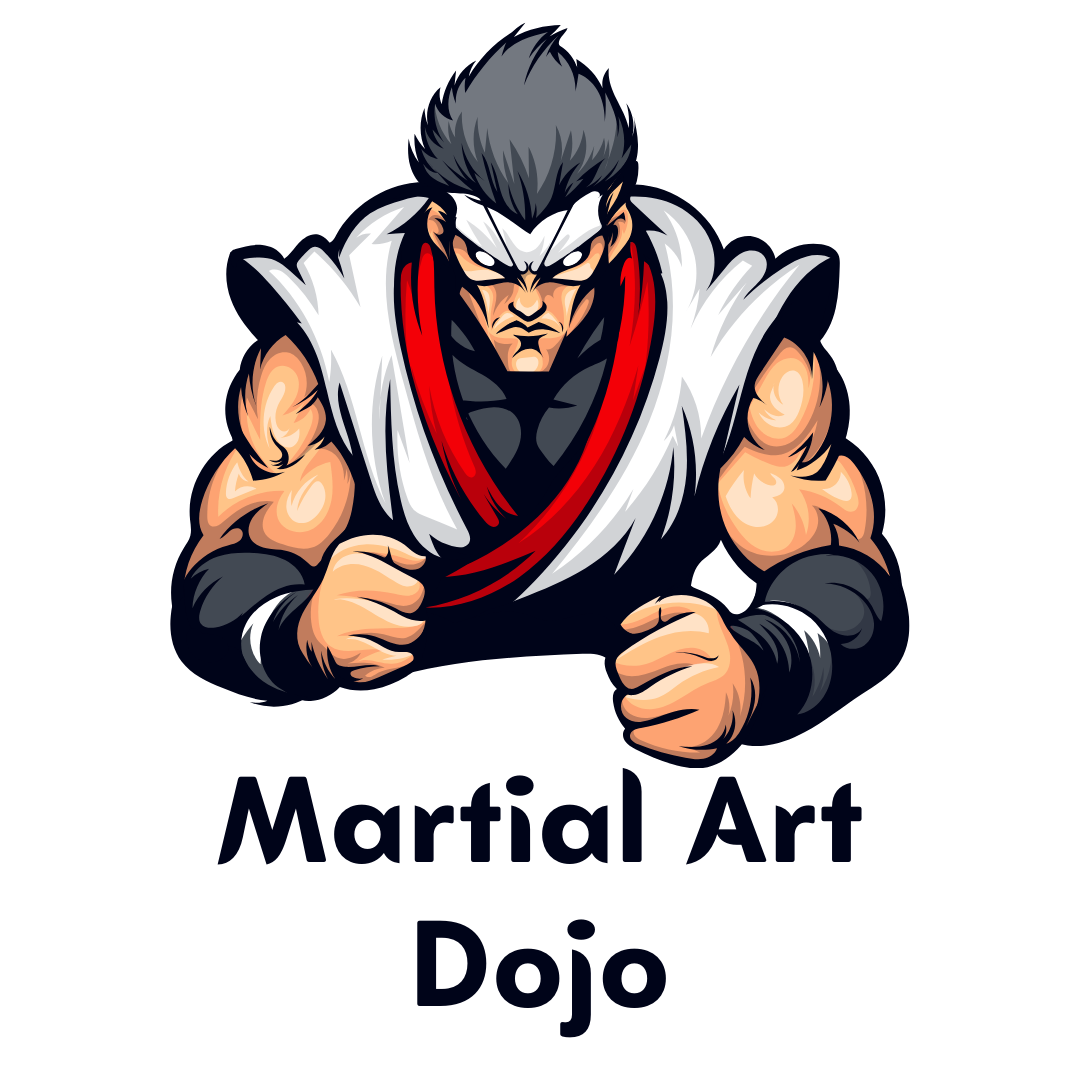Judo is a modern martial art and combat sport that originated from the ancient Japanese art of jujitsu. While jujitsu dates back over a thousand years as a battlefield art designed to defeat armed opponents without weapons, judo evolved in the late 19th century as a holistic physical, mental and moral pedagogy adapted for peacetime application.

Contents
The Evolution of Jujitsu as a Warrior Tradition
Jujitsu emerged in feudal Japan amongst the bushi warrior class and came to prominence during the Muromachi period 1336-1573 as unarmed fighting tactics used by the samurai when they lost their weapons in battle. Various schools known as “ryu” developed distinctive styles of jujitsu over the centuries, including:
- Takenouchi-ryū (1532) – founded by Hisamori Takenouchi, focused on joint-locking and throwing techniques
- Yoshin-ryū (1632)- founded on battle tactics by Akiyama Shiro Yoshitoki
- Sekiguchi-ryū (1628)- specialized tactics for unarmed against armed opponents
Jujitsu ryu utilized body positioning and leverage to neutralize threats. Core techniques included:
- Striking/kicking (atemi) to vital areas
- Throwing (nage waza) opponents off balance
- Joint locks (kansetsu waza) – elbows, wrists, fingers
- Chokes and strangles (shime waza)
- Grappling/pins (katame waza)
The extreme brutality of the battlefield forged jujitsu into a pragmatic and ruthless martial art specialized for self-defense and killing if necessary. Techniques were often kept secret and taught to a select few disciples. During the largely peaceful Edo period (1603-1868), many jujitsu schools dissipated or transitioned into physical culture for the elite.
Rise of Kodokan Judo
This would change through the work of Kanō Jigorō (1860-1938), born to an influential family in the waning years of the Tokugawa shogunate. Small and weak as a child, Jigoro was sent by his father to study jujitsu for discipline and self-protection. He trained under various masters for over 10 years, eventually obtaining mastery across different schools.

However, Jigoro grew disillusioned with limitations in jujitsu instruction which focused excessively on esoteric technique without a central ethos or pedagogy. In 1882, Jigoro founded his own school – Kōdōkan (Institute for the Way of Self-Mastery) in Tokyo and coined the term “judo” meaning “gentle, adaptable way” – adapting jujitsu to educate the whole person in physical vitality, social virtue and personal character.
Key Innovations Establishing Judo
- Randori (free-sparring) – full-force sparring practice with partners
- Shiai (competition) – introduced contest matches
- Dan/Kyu ranking – colored belts to denote mastery/progress
- Kata (forms) – preserving/perfecting techniques and principles
This more accessible system quickly attracted students beyond warrior clans, as Jigoro promoted judo instruction for the broader Japanese public and overseas. Core judo principles emphasized maximum efficiency of energy/balance practicing techniques such as:
- Nage waza (throwing)
- Katame waza (grappling/pins)
- Atemi waza (strikes) as setups for throws/transitions
- Ne waza (ground techniques)
- Kaeshi waza (counter-techniques)
Training was designed to strengthen students holistically – physically, psychologically and morally – rooted in ideas of discipline, respect, integrity and self-cultivation. Judo’s impact strengthened through public displays and challenge matches against rival jujitsu schools, which increased its reputation domestically and abroad.
Global Transmission of Judo
As Japan re-opened to the West in the early 1900s after centuries of isolationism, judo served as a bridge for cultural exchange. Prominent disciples of Kano like Yoshiaki Yamashita (1865–1935) and Mitsuyo Maeda (1878–1941) traveled overseas to Europe, the Americas and beyond to demonstrate judo and teach internationally.
Some notable pioneers transmitting judo across the early 20th century include:
United States
- Yoshiaki Yamashita: First judo teacher in North America – opened groundbreaking New York dojo in 1904 teaching law enforcement/military personnel
France & Europe
- Mikinosuke Kawaishi: Studied under Jigoro Kano – instrumental spreading judo in France/Europe opening 100s of clubs after 1935
Russia & Soviet Bloc
- Vasili Oshchepkov: Lived/trained over 10 years Japan – founded Russia’s first judo club in 1937 and developed Soviet judo programs
Brazil
- Mitsuyo Maeda: Legendary fighter – taught Kano’s judo to the Gracie family 1922 planting seeds for Brazilian Jiu Jitsu
This early exportation and adaptation established foundations for global judo prominence allowing the sport to continue evolving.
Path Towards Olympic Inclusion
Jigoro Kano always envisioned judo as an athletic activity and philosophical physical education for the masses. From its early days he lobbied, without success during his lifetime, for inclusion as an Olympic sport to consolidate legitimacy.
After over fifty years of judo development worldwide, the International Judo Federation (IJF) was finally recognized by the IOC in the late 1950s. Judo debuted as an event in the 1964 Summer Olympic Games held in Tokyo, Japan where Dutch judoka Anton Geesink’s gold medal in the Open category came as a shock, defeating home favorites Kaminaga, Sone and Nagaoka.
Olympic Judo Medal Table 1964-Today
| Nation | Total Medals | Gold | Silver | Bronze |
|---|---|---|---|---|
| Japan | 84 | 39 | 16 | 29 |
| France | 49 | 11 | 16 | 22 |
| South Korea | 45 | 12 | 6 | 27 |
| Russia | 29 | 7 | 6 | 16 |
| China | 28 | 5 | 9 | 14 |
This intensely physical chess-match became a crowning showcase at every Olympics attracting worldwide interest, as judo evolved from obscure relic of samurai heritage to beloved modern sport combining technical mastery with philosophical spirit.
Emergence of Competitive Judo Styles
Olympic competition drove specialization as different tactics emerged for the nuances of shiai contests versus classical self defense orientation. Distinct competitive judo styles developed centered around dominant nations:
Japanese/East Asian Style
Known for blistering speed, intricate footwork and dynamic throws – epitomized by champions like Toshihiko Koga and Yasuhiro Yamashita. Strengths: shooting techniques (ashi waza) and counter throws
European Style
Favoring a well-rounded approach built upon power and endurance with impeccable timing. Famously demonstrated by icons like Geesink, Jean-Luc Rougé and Teddy Riner. Strengths: skillful positioning and physicality.
Russian Style
Emphasizes dramatic sacrifice throwing techniques (sutemi waza), constant attacking and conditioning around strength and stamina – seen in legends Artur Taymazov, Mansur Isaev and Tagir Khaibulaev.
Korean Style
Strong circular lapel gripping (migi kenka migi) for spinning, sweeps and foot reap throws is signature alongside fast scrambling transitions and groundwork attack – evidenced by champions like Jang Sung-ho and Song Dae-nam.
As individuals fused tactics, judo continued progressing towards dynamic spectator sportopening to diverse athletes. Rule changes gradually transformed techniques judged acceptable for modern competition and safety – limiting certain joint locks or pins while expanding groundwork.
Women officially gained full inclusion at the 1992 Barcelona Olympics, further establishing judo’s universality.
Judo Culture and Values
Core judo DNA permeates across all styles and ranks centering principles Jigoro Kano emphasized from early years:
- Jita Kyoei (Mutual welfare and benefit)
- Seiryoku Zenyo (Maximum efficiency with minimum effort) Ideally these manifest in the Dojo Kun – code of conduct governing judo training:
- Be courteous and respectful
- Train diligently with gratitude
- Foster self-control and courage
4.Honor the principles of judo
Judo techniques even in sport application encapsulate these high ideals – using opponents’ energy against them, unbalancing aggression with pliancy, pitting skill against strength.
Through regular randori practice cultivating perseverance, respecting partners and controlling the ego, judo forges well-rounded citizens improving community welfare. Sport competition provides a platform to test this character on mats if not battlefields.
Kano’s Legacy
As Jigoro Kano famously said, “Judo is the way to the most effective use of both physical and spiritual strength.”
Originating out of battlefield jujitsu during Japan’s feudal age, Kano resurrected and reinvented the art to make it safely applicable for people of all sizes, strengths, genders and ages in an era turning towards peace, education and global friendship spanning fighting styles, social classes and nations.
From samurai origins to its Olympic pinnacle today engaging billions worldwide, judo continues evolving as dynamic philosophy and activity promoting human development, mutual understanding and community service – fulfilling Jigoro Kano’s lifelong vision.
This blog post traced the history of judo across over 140 years from ancient jujitsu forms used by samurai warriors transformed by Jigoro Kano into an educational system that improved technical capability, physical health, ethical behavior and eventually friendship between some rival nations across the world.
We discussed key techniques, competitive styles and cultural values that make judo unique as both globally celebrated sport and revered tradition still instructing essential life lessons. There are many remaining areas to continue exploring – the post-Olympic development, gender integration, Brazilian offshoots, and future possibilities as judo spreads in the 21st century interconnected age and perhaps returns to its self-defense roots given rising social uncertainties similar to its origins.
Revisiting this heritage helps honor pioneers like Jigoro Kano who devoted their lives to creating beautiful practices promoting human unity through discipline, sweat and throwing each other to the ground.
- Read More on WebJapan!
- Read Next on Must-Know Throwing Techniques of Judo: O Soto Gari, Seoi Nage and Beyond
FAQs
Here are 30 frequently asked questions for the history of judo blog post:
Where did judo originate from?
Judo originated from ancient jujitsu fighting systems developed in feudal Japan.
Who founded judo?
Judo was founded by Kanō Jigorō in 1882 based on jujitsu but evolved for wider public benefit.
What does judo mean?
The word judo means “gentle, adaptable way” reflecting the adaptation from jujitsu into a holistic physical and moral activity.
What are the core principles of judo?
Key judo principles emphasize maximum efficiency, mutual benefit/welfare (jita kyoei) and self-mastery.
What are the main competitive judo techniques?
Core judo techniques for competition include throwing (nage waza), grappling/pins (katame waza) and groundwork (ne waza).
How did judo spread around the world?
Prominent judo teachers like Yamashita and Maeda introduced it overseas as Japan opened to the West in the early 1900s.
When did judo debut as an Olympic event?
Judo was first included in the 1964 Summer Olympics held in Tokyo, Japan as a crowning achievement.
Which countries have dominated Olympic judo?
Japan, France, South Korea, Russia and China lead historically in Olympic judo medals.
What are the main judo competitive styles?
Signature judo competitive styles include Japanese, Korean, European and Russian – fused from various tactics.
How has judo changed from its martial arts origins?
Judo evolved focus from battlefield self-defense into competitive sport, adapting rules and techniques.
What are key judo values and principles?
Ideals like discipline, self-mastery, respect and mutual benefit permeate judo philosophy and culture.
Who were top early judo teachers overseas?
Influential early judo teachers internationally include Yamashita, Kawaishi, Oshchepkov and Maeda.
Where did Brazilian jiu jitsu originate from?
Brazilian jiu jitsu traces roots to Mitsuyo Maeda teaching judo to the Gracie family in Brazil.
How has women’s judo participation grown?
Women gained rising involvement in judo during the 20th century, including as Olympians since 1992.
Which techniques were originally used in samurai jujitsu?
Samurai jujitsu featured techniques like striking, throwing, joint locks, chokes/strangles for armed combat.
What are some prominent Japanese judo styles?
Key Japanese judo styles emphasize speed and agility, from Tokyo and Kodokan Police styles.
What are some differences between judo and jujitsu?
Jujitsu traditionally focuses more on self-defense application without formalized competitive formats.
How has judo impacted Japanese culture?
Judo influenced Japanese language, education, fitness and social norms regarding women’s roles.
Who pioneered introducing judo to Russia?
Vasili Oshchepkov spearheaded Russia’s first judo club in the 1930s and Soviet training programs.
Who was Anton Geesink and why was he important?
Dutch Judoka Anton Geesink winning 1964 Olympic gold came as shock beating the Japanese.
How has judo contributed to world diplomacy?
Judo served as early cultural bridge between Japan and the West, pioneering international sport exchanges.
What does the Kodokan represent?
The Kodokan is Jigoro Kano’s school and physical/philosophical home for judo in Tokyo, Japan founded in 1882.
Who were influential founders of judo styles?
Prominent founders of signature judo schools include Kano, Yamashita, Samura, Ochiai and Mifune.
What are some judo terms adopted internationally?
Judo vocabulary like dojo, randori, kata, sensei became part of languages internationally.
What does judo “randori” practice involve?
Randori refers to full-force judo free sparring practice with training partners of all skill levels.
What are some judo “kata” principles?
Judo kata are pattern practice involving throwing, choking and locking techniques with a partner.
How do judo principles apply off the mat?
Judo philosophy emphasizes improving oneself morally, socially and intellectually beyond physical technique.
